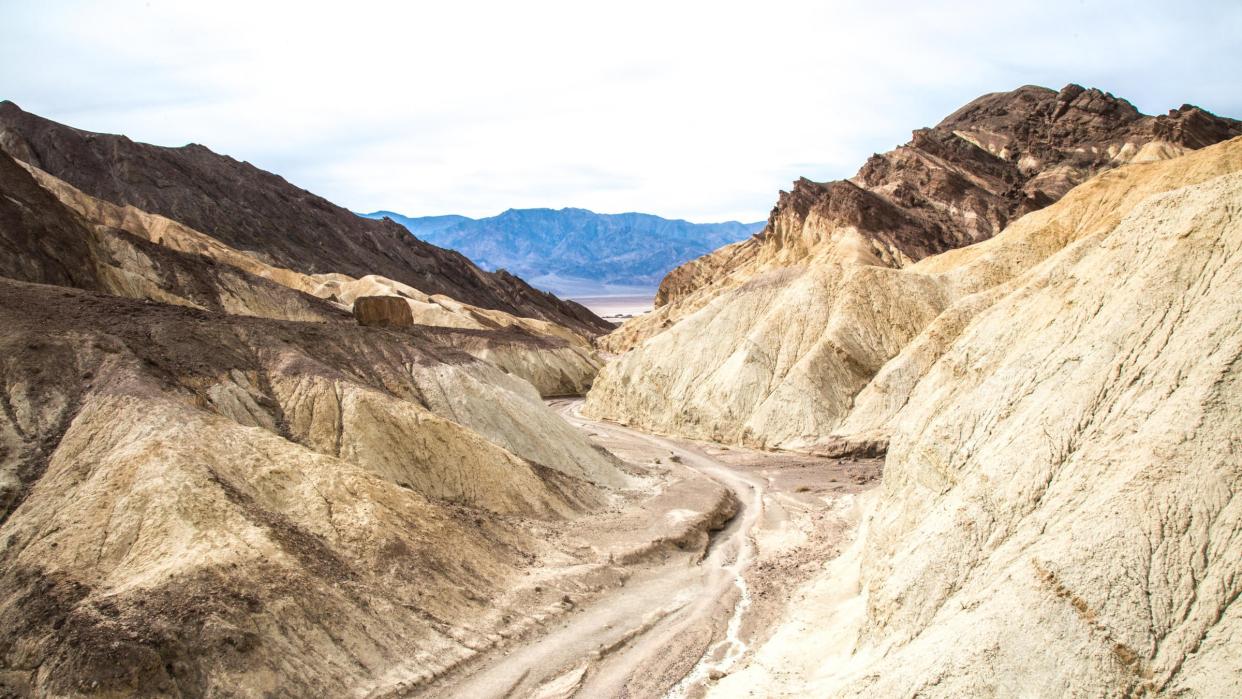A Hiker Died in Death Valley When Temperatures Reached 121 Degrees

This article originally appeared on Outside
A hiker died of possible heat illness at a Death Valley trailhead on Tuesday as temperatures rose to 121degF, the park says.
Steve Curry, 71, collapsed outside the restrooms at Golden Canyon, a dayhiking destination with more than 7 miles of often-exposed trail winding through sculpted sedimentary rock formations. The incident occurred shortly after 3:30 p.m., during the hottest part of the day; while temperatures at Badwater Basin reached 121degF, temperatures in the canyons were even hotter "due to canyon walls radiating the sun's heat." The National Park Service said Curry, who was visiting from Los Angeles, had just finished a hike in the area and was kitted out in a sun hat and hiking apparel and carrying a backpack.
On Facebook, the Inyo County Sheriff's Office said that Curry had hiked to Zabriskie Point, about 2 miles away from the parking lot, where he gave an interview to Los Angeles Times journalist Hayley Smith and photographer Francine Orr, who had visited the park to report on its extreme heat wave. Curry, who was huddled in the shade underneath "a small metal interpretive sign," told the reporters he had hiked to Zabriskie Point early that morning.
"It's a dry heat...Everything's hot here" he said.
Afterward, Curry apparently made the return trip to the Golden Canyon trailhead, where he had left his car, and collapsed shortly thereafter. Other visitors who saw him called 911. Rangers from the NPS and Inyo County Sheriff's deputies responded and used CPR and an automated external defibrillator in an attempt to revive him, but were ultimately unsuccessful.
While authorities haven't officially determined Curry's cause of death, NPS rangers suspect that it was heat-related. If so, he would be the second person to pass away from heat illness in the park this summer, following the death of a 65-year-old man on July 3.
The ongoing country-wide heat wave has made this summer one of the hottest on record in Death Valley. So far this year, the park has notched 28 days where temperatures rose above 110degF and risen as high as 128degF. That's just a few degrees shy of the 130degF highs that the park saw in July 2021 and August 2020, which some meteorologists consider to be the highest temperature ever reliably measured on Earth.
Even sunset hasn't provided a respite from the searing heat. On July 17, the park recorded what scientists are preliminarily calling the hottest midnight ever seen on earth, with temperatures hitting 120degF between 12 a.m. and 1 a.m.
In that kind of extreme heat, even routine rescues become difficult. According to the NPS, a rescue helicopter from California and Nevada air ambulance service Mercy Air was unable to respond to the emergency because the high temperatures left it unable to generate enough lift, though it's unclear from reports whether an air rescue would have made a difference in the outcome. That scenario is becoming more and more common in Death Valley, Grand Canyon, and other extremely hot national parks, as Corey Buhay wrote in a 2021 article for Backpacker:
"At lower temperatures, around 100 or even 110degF, pilots can leave behind litters, medical equipment, and other items to reduce the weight of an aircraft enough for it to fly. But at temps higher than that?
'That's when we're going to have to start declining missions,' [California Highway Patrol helicopter pilot Brian] Byrod says. "If it's at sea level and it's 130degF, we're not going to be able to take that mission.'"
In response to the incident, Death Valley National Park officials urged hikers to carry extra water, hike very early and very late in the day, and not to venture onto trails after 10 a.m. All hikers should also be able to recognize the signs and symptoms of heatstroke, including "throbbing headache; dizziness and light-headedness; lack of sweating despite the heat; red, hot, and dry skin; muscle weakness or cramps; nausea and vomiting; rapid heartbeat (either strong or weak); rapid, shallow breathing; behavioral changes such as confusion, disorientation, or staggering; seizures; and unconsciousness," and seek help immediately if they or their partners exhibit any of them.
For exclusive access to all of our fitness, gear, adventure, and travel stories, plus discounts on trips, events, and gear, sign up for Outside+ today.

